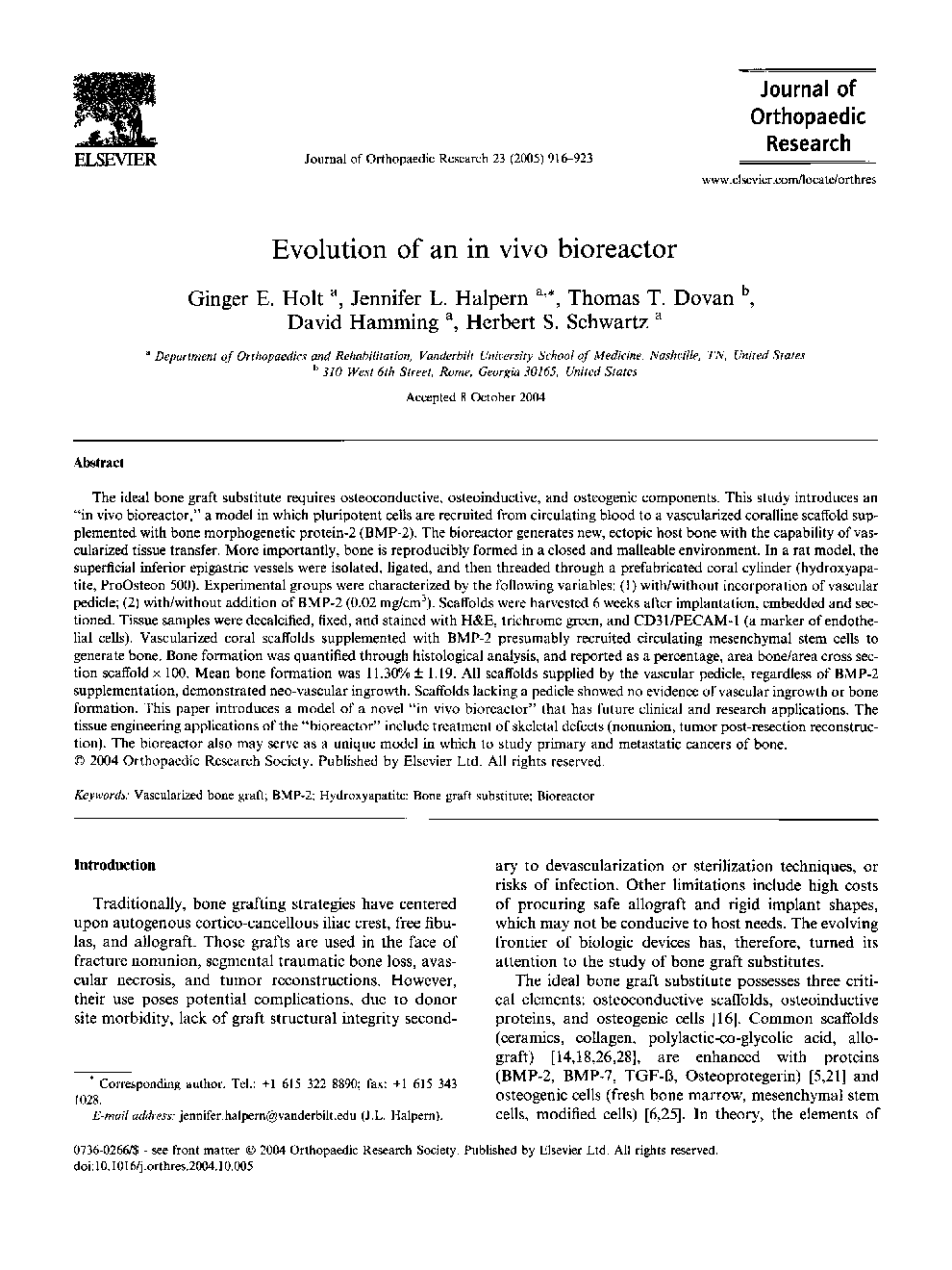| کد مقاله | کد نشریه | سال انتشار | مقاله انگلیسی | نسخه تمام متن |
|---|---|---|---|---|
| 9353953 | 1266794 | 2005 | 8 صفحه PDF | دانلود رایگان |
عنوان انگلیسی مقاله ISI
Evolution of an in vivo bioreactor
دانلود مقاله + سفارش ترجمه
دانلود مقاله ISI انگلیسی
رایگان برای ایرانیان
کلمات کلیدی
موضوعات مرتبط
علوم پزشکی و سلامت
پزشکی و دندانپزشکی
ارتوپدی، پزشکی ورزشی و توانبخشی
پیش نمایش صفحه اول مقاله

چکیده انگلیسی
The ideal bone graft substitute requires osteoconductive, osteoinductive, and osteogenic components. This study introduces an “in vivo bioreactor,” a model in which pluripotent cells are recruited from circulating blood to a vascularized coralline scaffold supplemented with bone morphogenetic protein-2 (BMP-2). The bioreactor generates new, ectopic host bone with the capability of vascularized tissue transfer. More importantly, bone is reproducibly formed in a closed and malleable environment. In a rat model, the superficial inferior epigastric vessels were isolated, ligated, and then threaded through a prefabricated coral cylinder (hydroxyapatite, ProOsteon 500). Experimental groups were characterized by the following variables: (1) with/without incorporation of vascular pedicle; (2) with/without addition of BMP-2 (0.02 mg/cm3). Scaffolds were harvested 6 weeks after implantation, embedded and sectioned. Tissue samples were decalcified, fixed, and stained with H&E, trichrome green, and CD31/PECAM-1 (a marker of endothelial cells). Vascularized coral scaffolds supplemented with BMP-2 presumably recruited circulating mesenchymal stem cells to generate bone. Bone formation was quantified through histological analysis, and reported as a percentage, area bone/area cross section scaffold Ã 100. Mean bone formation was 11.30% ± 1.19. All scaffolds supplied by the vascular pedicle, regardless of BMP-2 supplementation, demonstrated neo-vascular ingrowth. Scaffolds lacking a pedicle showed no evidence of vascular ingrowth or bone formation. This paper introduces a model of a novel “in vivo bioreactor” that has future clinical and research applications. The tissue engineering applications of the “bioreactor” include treatment of skeletal defects (nonunion, tumor post-resection reconstruction). The bioreactor also may serve as a unique model in which to study primary and metastatic cancers of bone.
ناشر
Database: Elsevier - ScienceDirect (ساینس دایرکت)
Journal: Journal of Orthopaedic Research - Volume 23, Issue 4, July 2005, Pages 916-923
Journal: Journal of Orthopaedic Research - Volume 23, Issue 4, July 2005, Pages 916-923
نویسندگان
Ginger E. Holt, Jennifer L. Halpern, Thomas T. Dovan, David Hamming, Herbert S. Schwartz,